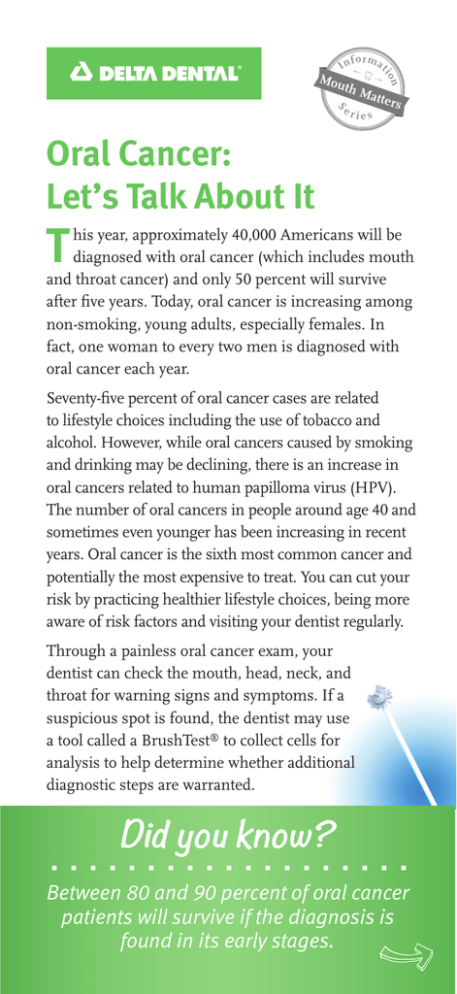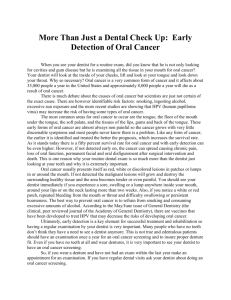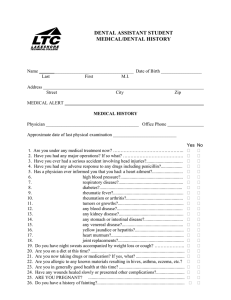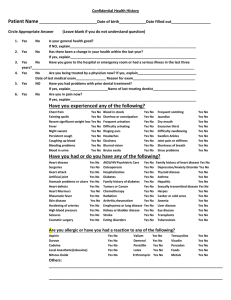T Oral Cancer: Let’s Talk About It
advertisement

f o r ma n S er t io In Mou th Mat ter ies s Oral Cancer: Let’s Talk About It T his year, approximately 40,000 Americans will be diagnosed with oral cancer (which includes mouth and throat cancer) and only 50 percent will survive after five years. Today, oral cancer is increasing among non-smoking, young adults, especially females. In fact, one woman to every two men is diagnosed with oral cancer each year. Seventy-five percent of oral cancer cases are related to lifestyle choices including the use of tobacco and alcohol. However, while oral cancers caused by smoking and drinking may be declining, there is an increase in oral cancers related to human papilloma virus (HPV). The number of oral cancers in people around age 40 and sometimes even younger has been increasing in recent years. Oral cancer is the sixth most common cancer and potentially the most expensive to treat. You can cut your risk by practicing healthier lifestyle choices, being more aware of risk factors and visiting your dentist regularly. Through a painless oral cancer exam, your dentist can check the mouth, head, neck, and throat for warning signs and symptoms. If a suspicious spot is found, the dentist may use a tool called a BrushTest® to collect cells for analysis to help determine whether additional diagnostic steps are warranted. Did you know? Between 80 and 90 percent of oral cancer patients will survive if the diagnosis is found in its early stages. Quick bites Watch for early warning signs In addition to regular checkups, you can perform self-exams at home to look for early warning signs. Start in one area and follow a pattern of observation while being sure to check your face, neck, lips, cheek, mouth, tongue, and gums. Talk to your dentist if you find any of the following: §§ Development of new lumps, particularly that have increased in size §§ Sores that don’t heal within two weeks §§ Changes in the appearance of soft tissue §§ Persistent bleeding from the throat or mouth §§ Difficulty swallowing §§ Constant hoarseness §§ Numbness anywhere in the mouth Talk to your dentist about your risk to help increase your chances of early detection and treatment. Visit us online for more information on oral and overall health! Source: Oral Cancer Foundation. Oral Cancer Facts, www.oralcancerfoundation.org/facts, accessed June 2013. Delta Dental of Arkansas, Indiana, Kentucky, Michigan, New Mexico, North Carolina, Ohio, and Tennessee 6010 v2 PA 10/13



